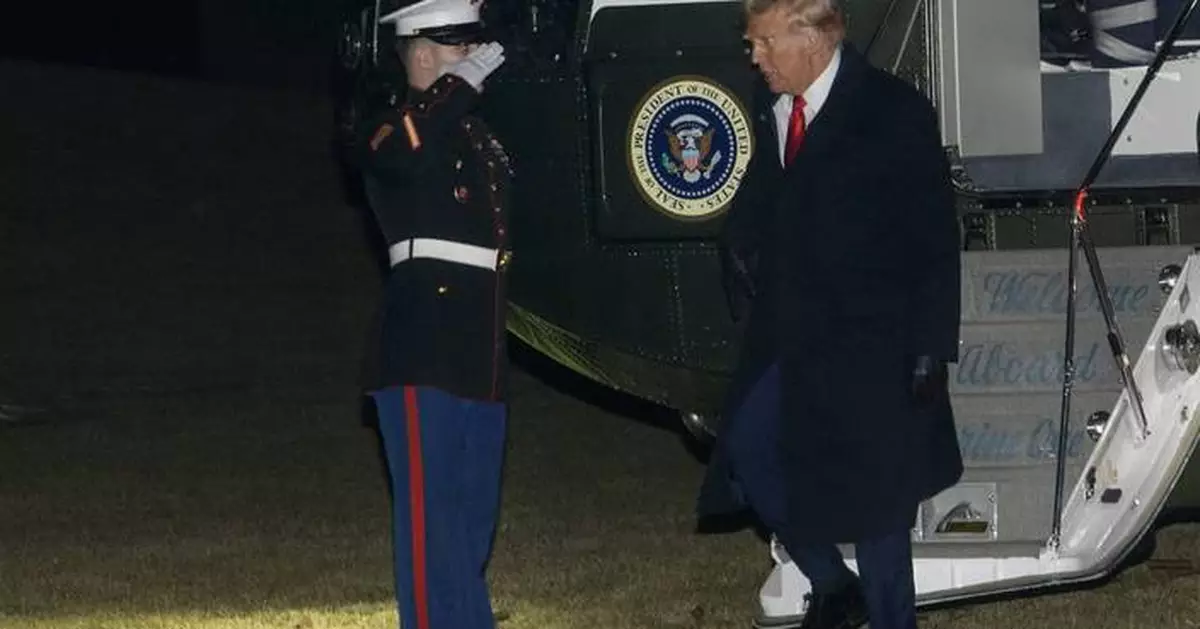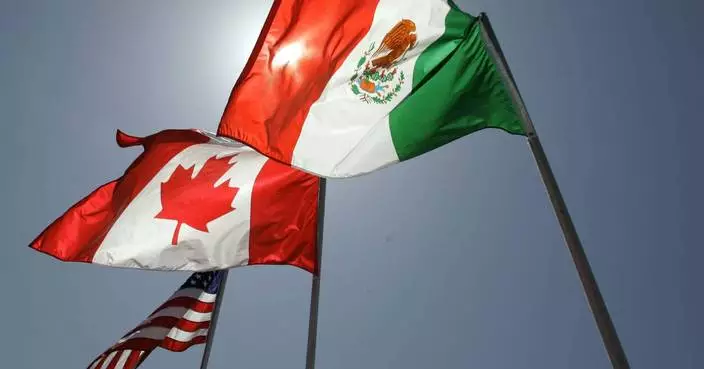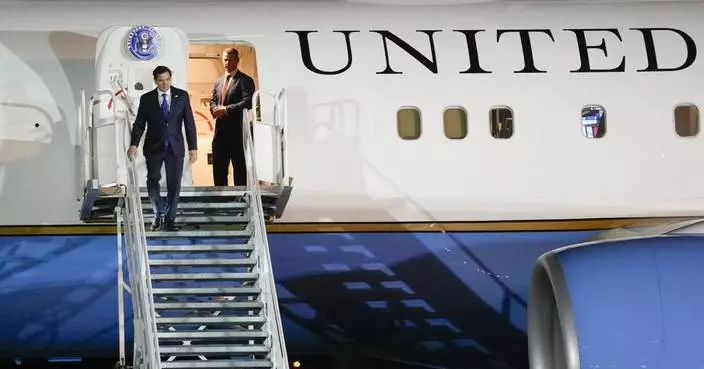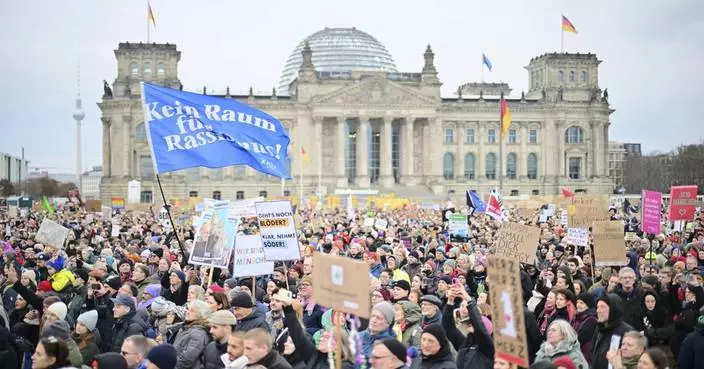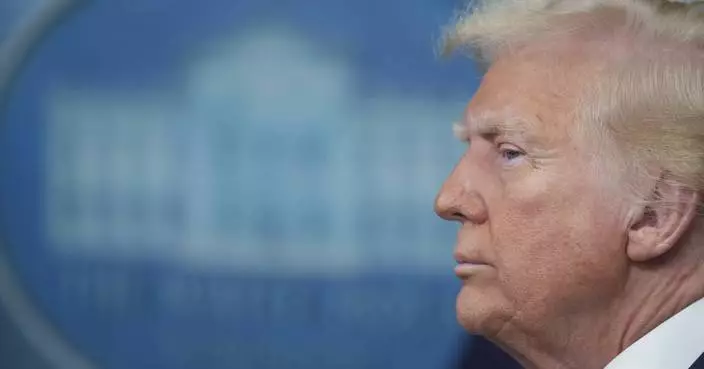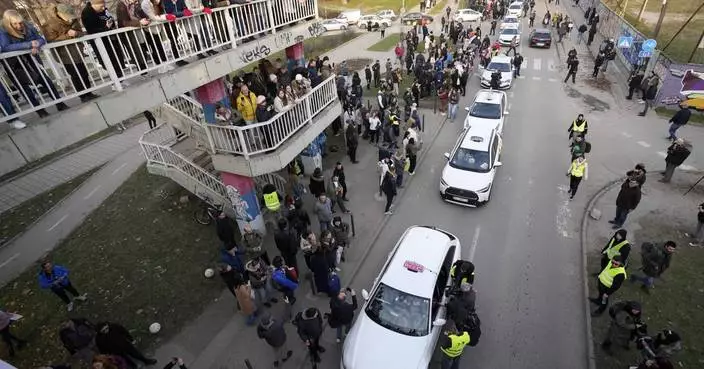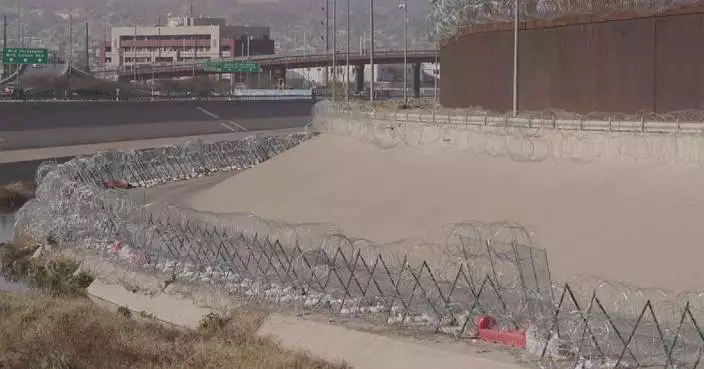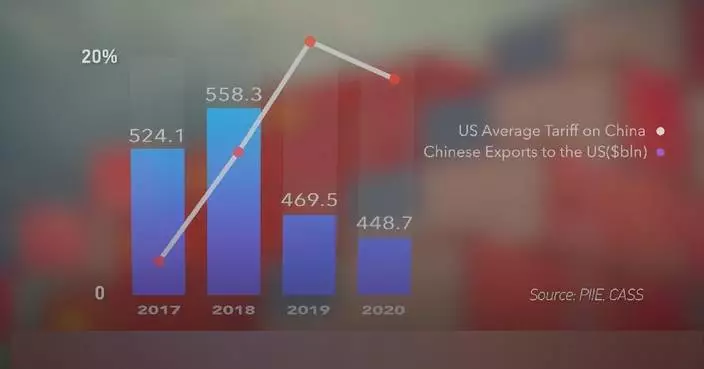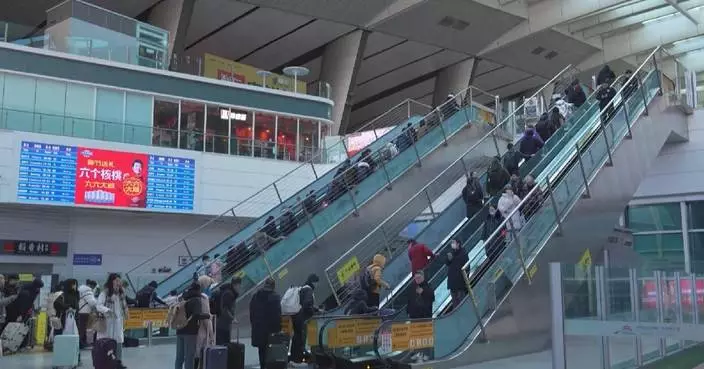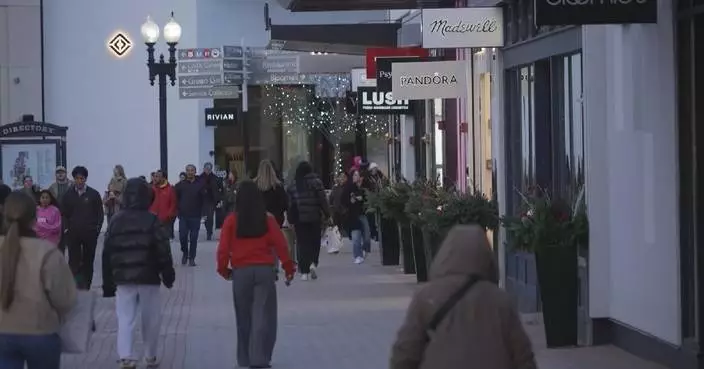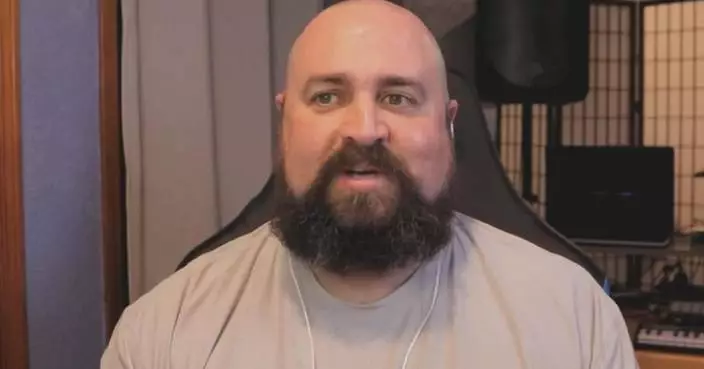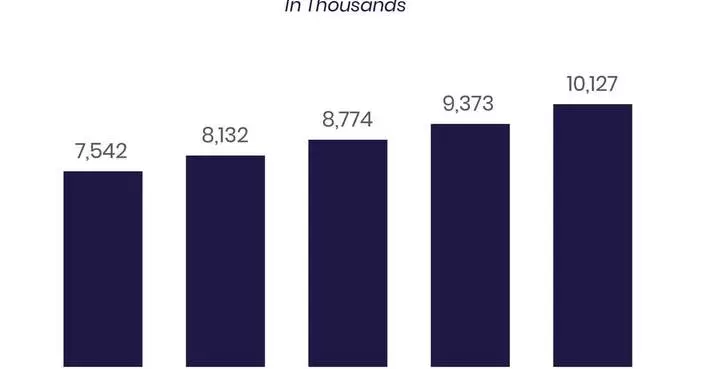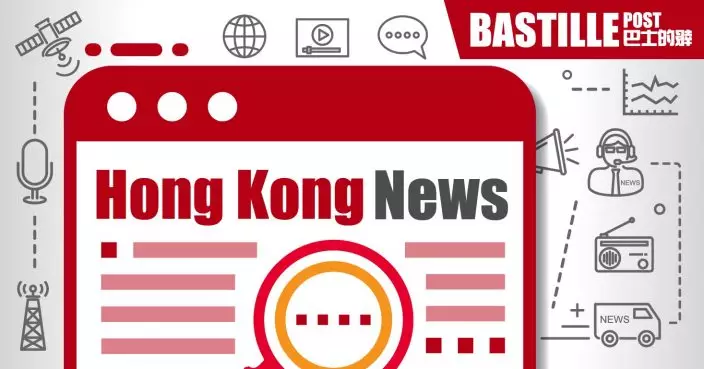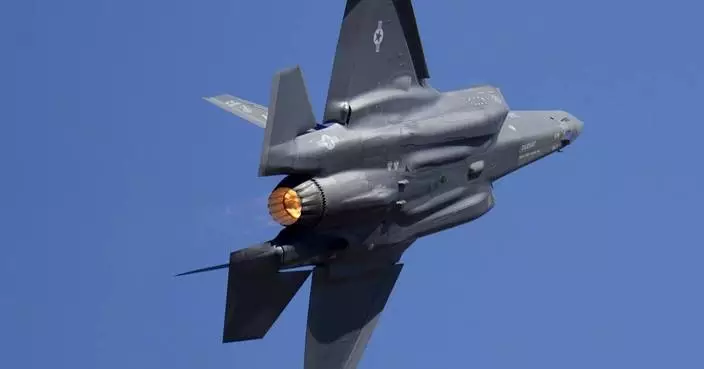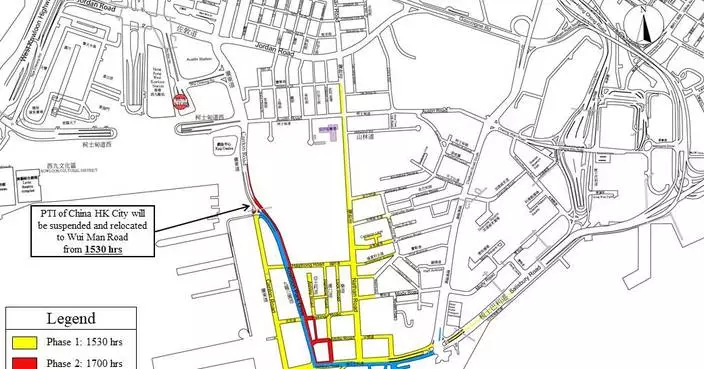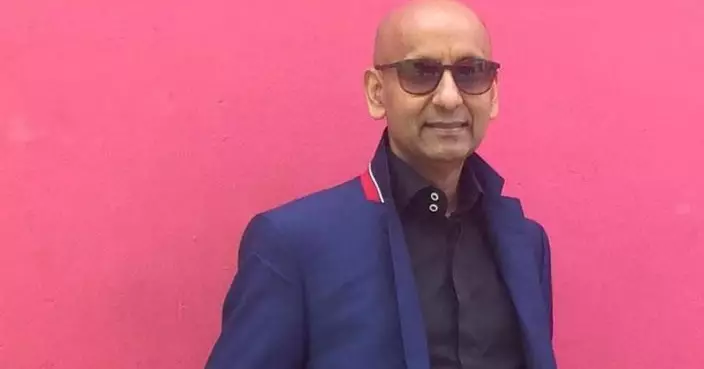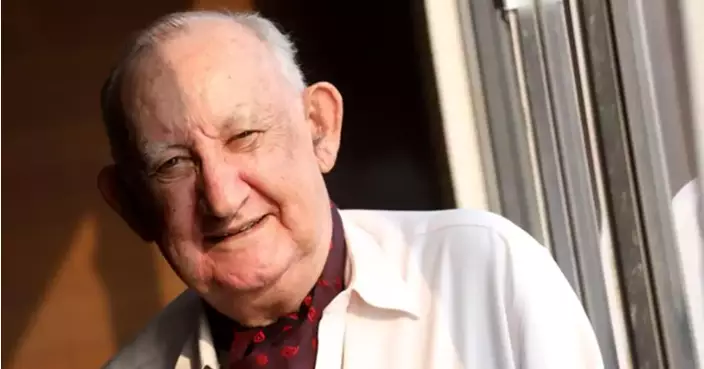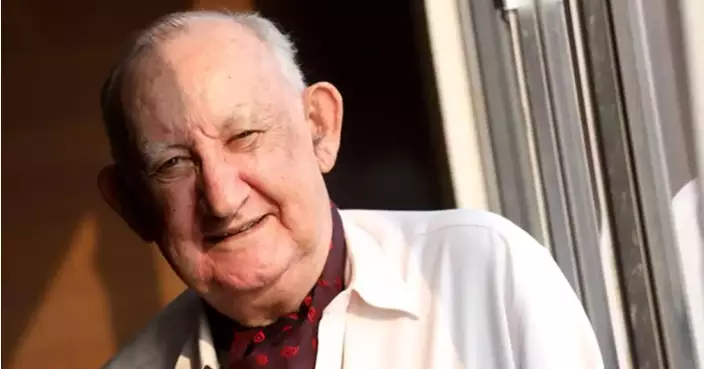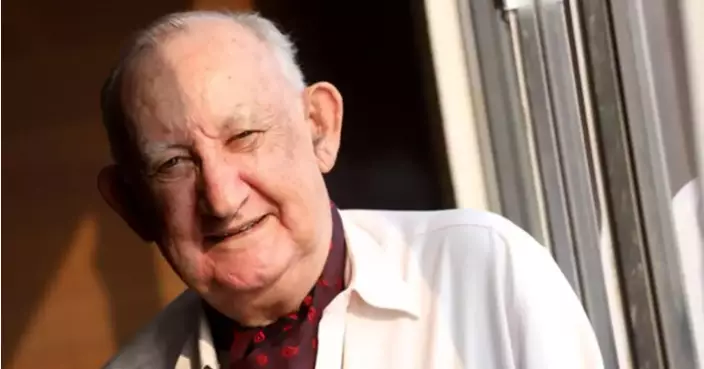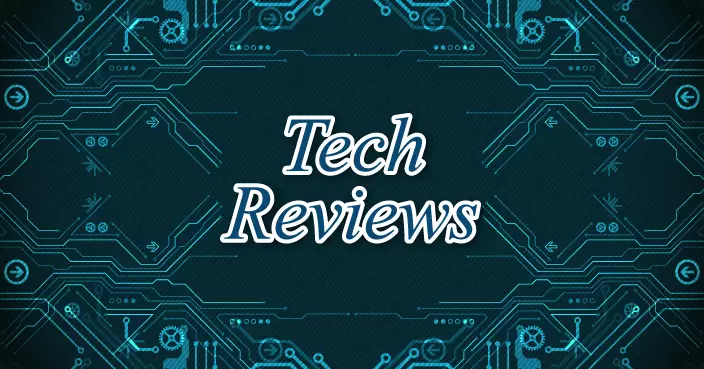WASHINGTON (AP) — The Trump administration announced Tuesday that it is offering buyouts to all federal employees who opt to leave their jobs by next week — an unprecedented move to shrink the U.S. government at breakneck speed.
A memo from the Office of Personnel Management, the government’s human resources agency, also said it would begin subjecting all federal employees to “enhanced standards of suitability and conduct” and ominously warned of future downsizing. The email sent to millions of employees said those who leave their posts voluntarily will receive about eight months of salary, but they have to choose to do so by Feb. 6.
President Donald Trump has built a political career around promising to disrupt Washington, and vowed that his second administration would go far further in shaking up traditional political norms than his first did. Still, the repercussions of so many government workers being invited to leave their jobs were difficult to calculate.
Katie Miller, who serves on an advisory board to the Department of Government Efficiency, a special Trump administration department headed by Tesla CEO Elon Musk and tasked with shrinking the size of government, posted on X, “This email is being sent to more than TWO MILLION federal employees.”
The federal government employed more than 3 million people as of November last year, which accounted for nearly 1.9% of the nation’s entire civilian workforce, according to the Pew Research Center. The average tenure for a federal employee is nearly 12 years, according to a Pew analysis of data from OPM.
Even a fraction of the workforce accepting buyouts could send shockwaves through the economy and trigger widespread disruptions throughout society as a whole, triggering wide-ranging — and as yet unknowable — implications for the delivery, timeliness and effectiveness of federal services across the nation.
Untold numbers of front-line health workers in the Veterans Affairs Department, officials who process loans for homebuyers or small businesses, and contractors who help procure the next generation of military weaponry could all head for the exits at once. It could also mean losing experienced food inspectors and scientists who test the water supply — while disrupting everything from air travel and consumer product protections.
In response, American Federation of Government Employees union President Everett Kelley said it should not be viewed as voluntary buyouts, but pressuring workers not considered loyal to the new administration to vacate their jobs.
“Purging the federal government of dedicated career federal employees will have vast, unintended consequences that will cause chaos for the Americans who depend on a functioning federal government,” Kelley said in a statement. "Between the flurry of anti-worker executive orders and policies, it is clear that the Trump administration’s goal is to turn the federal government into a toxic environment where workers cannot stay even if they want to.”
In its emailed memo detailing its plan, OPM lists four directives that it says Trump is mandating for the federal workforce going forward — including that most workers return to their offices full-time.
“The substantial majority of federal employees who have been working remotely since Covid will be required to return to their physical offices five days a week,” it reads. That echoes Trump, who said of federal employees over the weekend: “You have to go to your office and work. Otherwise you’re not going to have a job.”
The memo also says Trump “will insist on excellence at every level,” and while some parts of the government's workforce may increase under his administration, “The majority of federal agencies are likely to be downsized."
Finally, it says, the ”federal workforce should be comprised of employees who are reliable, loyal, trustworthy, and who strive for excellence in their daily work."
“Employees will be subject to enhanced standards of suitability and conduct as we move forward,” the memo reads.
The emailed message includes a “deferred resignation letter” for federal employees to begin leaving their posts.
“If you resign under this program, you will retain all pay and benefits regardless of your daily workload and will be exempted from all applicable in-person work requirements until September 30,” it says.
The email even includes instructions on how to accept, stating: "If you wish to resign: Select ‘Reply’ to this email. You must reply from your government account." It adds: “Type the word ‘Resign' into the body of this email and hit ‘send.’"
Meanwhile, OPM has released guidance for an executive order Trump signed on the first day of his second term known as “Schedule Career/Policy.” It replaces Schedule F, an order Trump signed late in his first term that sought to reclassify thousands of federal employees and make them political appointees without the same job security protections.
President Joe Biden rescinded Trump’s Schedule F order almost immediately upon taking office in 2021, and under his administration, OPM issued a new rule last year designed to make it more difficult to fire many federal employees.
That move was seen as a safeguard against using a new Schedule F order to help carry out the key goals of Project 2025, a sweeping plan by a conservative Washington think tank to dismiss large swaths of the federal workforce in favor of more conservative alternatives while also cutting back on the overall size of government.
But that hasn’t stopped the Trump administration from swiftly moving to gut the federal workforce and leave employees with little recourse to protest firings or reassignments.
Trump’s OPM on Monday set deadlines for agencies to begin to recommend workers for reclassification. Agency heads are being instructed to establish a contact person no later than Wednesday and begin to submit interim personnel recommendations within 90 days.
“Agencies are encouraged to submit recommendations on a rolling basis before this date,” Charles Ezell, the acting director of OPM, said in a memo.
Perhaps more stunning, the Trump personnel office simply did away with the Biden administration’s 2024 regulation to better protect federal workers. Monday's memo said Trump's new executive order used the president's authority “to directly nullify these regulations.”
Associated Press writers Zeke Miller and Lisa Mascaro in Washington and Brian Witte in Annapolis, Maryland, contributed to this report.
__
This story has been corrected to change the buyout proposal to eight months of salary, not seven.
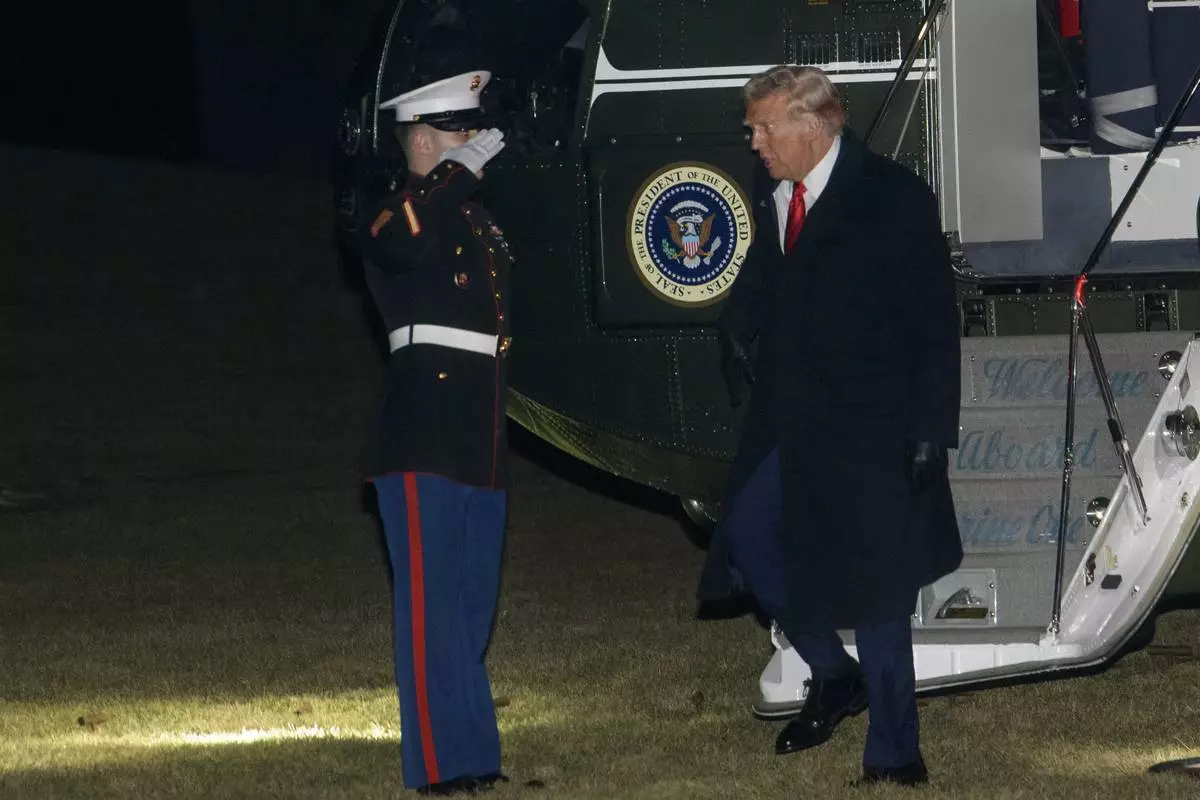
President Donald Trump greets a Marine Corps honor guard as he disembarks Marine One upon arrival on the South Lawn of the White House in Washington, Monday, Jan. 27, 2025. (AP Photo/Rod Lamkey, Jr.)
TORONTO (AP) — Canada’s prime minister and Mexico’s president ordered retaliatory tariffs on goods from the U.S, following through with their threats after U.S. Donald Trump sparked a trade war by imposing sweeping tariffs on imports from Canada, Mexico and China.
Canada had been proactively saying for months that it would respond to any tariffs on Washington's North American allies, while Mexico followed a more cautious approach. But in the end both nations did what they had anticipated: retaliate.
Prime Minister Justin Trudeau and Mexican President Claudia Sheinbaum spoke by phone Saturday after Trump's administration imposed sweeping tariffs — 25% on goods from Canada and Mexico, and 10% on imports from China — although there is still no indication the two countries are coordinating responses or will act in concert in the coming days.
Trudeau's office released a statement about the call with Sheinbaum in which they agreed “to enhance the strong bilateral relations” between Canada and Mexico.
Unlike Mexico, whose president only announced it will impose retaliatory tariffs without mentioning any rate nor products, Trudeau announced Canada will respond with 25% tariffs against $155 billion worth of American goods, including alcohol, furniture and orange juice, and he even suggested Canadians should not buy U.S. products or vacation in the U.S.
“Now is the time to chose products made right here in Canada,” Trudeau posted on X on Sunday.
Canada and Mexico ordered the tariffs late Saturday despite Trump’s further threat to increase the duties charged if retaliatory levies are placed on American goods.
“We’re certainly not looking to escalate but we will stand up for Canada," Trudeau said late Saturday.
At the local level, some authorities in provinces like Ontario, British Columbia and Nova Scotia will remove American liquor brands from government store shelves. Ontario Premier Doug Ford said Sunday the Liquor Control Board of Ontario sells nearly $1 billion worth of American wine, beer, spirits and seltzers every year.
“Not anymore,” Ford said in a statement. “Starting Tuesday, we're removing American products from LCBO shelves. As the only wholesaler of alcohol in the province, LCBO will also remove American products from its catalogue so other Ontario-based restaurants and retailers can't order or restock U.S. products.”
And besides the official responses, people are already thinking on their own ways to face Trump's decision, and one of the initial reactions has been to share in social media lists with alternatives to American products.
Trudeau, in fact, addressed Americans directly, saying they the tariffs “will have real consequences for you.”
Trump responded Sunday, critcizing Canada’s trade surplus with the United States and contending that without that surplus, “Canada ceases to exist as a viable Country. Harsh but true! Therefore, Canada should become our Cherished 51st State. Much lower taxes, and far better military protection for the people of Canada — AND NO TARIFFS!”
Canadians are feeling an undeniable sense of betrayal from their one-time closest allies and friends. Trudeau reminded Americans that Canadian troops fought alongside them in Afghanistan and helped respond to myriad crises from wildfires in California to Hurricane Katrina.
Canadian hockey fans booed the American national anthem at two National Hockey League games on Saturday night.
In Mexico, the official public approach to Trump’s tariff threat has been different , limiting public statements to saying the government was prepared for whatever was coming and that it would ensure the country was respected.
Recalling how in 2019 Mexico was ultimately able to avoid Trump’s tariff threat by adding immigration control to the responsibilities of its newly formed National Guard, Mexico was hoping to dodge the tariffs again or at least find a way to get them lifted quickly.
But the accusation of criminal alliances with Sheinbaum’s administration pushed her to punch back. She called on the U.S. to clean up its own problems with drugs and guns and keep its nose out of Mexico. Trump said he was imposing the tariffs to stop the flow of illegal immigrants and drugs across both the southern and northern U.S. borders.
Beyond the tariffs, academics and diplomats in Mexico harshly criticized the “retaliation clause” Trump included that threatened to raise tariff levels even higher if the targets hit back.
Martha Bárcena, former Mexico ambassador to the U.S. during Trump’s first term, said it’s “very delicate because there has never been such a harsh official statement by the United States government against the Mexican government.”
“It indicates not only a lack of trust, but the consideration of the Mexican government as a national security threat to the United States with all of its implications,” Bárcena said.
Gabriela Siller, director of economic analysis at the Mexican financial group Banco Base, said that the tariffs could trigger an “economic crisis” in Mexico, resulting in a blow for key industries, rising unemployment and price hikes.
In the short term, Sheinbaum’s government would likely have to “apply a countercyclical fiscal policy in Mexico so that there would not be a crash” and take on mounting debt, Siller said.
In the long term, the government would need to seek out new trade agreements, but over-dependence on trade ties with the U.S. will make it hard for Mexico to quickly diversify exports, she said.
After Trump won the election in November, Canadian leaders openly said Mexico was the problem on trade and the border, not Canada. And some have continued to say so.
“I can assure you what President Trump underestimates -- the resilience of the Canadian people, the strength of the Canadian people. No matter what political stripe, we come from Canada, we’re united," Ontario Premier Doug Ford said. “I can tell the American people, Canada is not the problem. The problem is the Mexican border and China. That’s where the problem is.”
The trade war comes as Canada is entering an election cycle. Trudeau's Liberal Party will announce a new leader on March 9 and a spring election is expected.
“Canada will not bow down to a bully," said Mark Carney, considered the frontrunner to replace Trudeau.
Verza contributed from Mexico City. AP writers Megan Janetsky and Fabiola Sánchez also contributed from Mexico City.
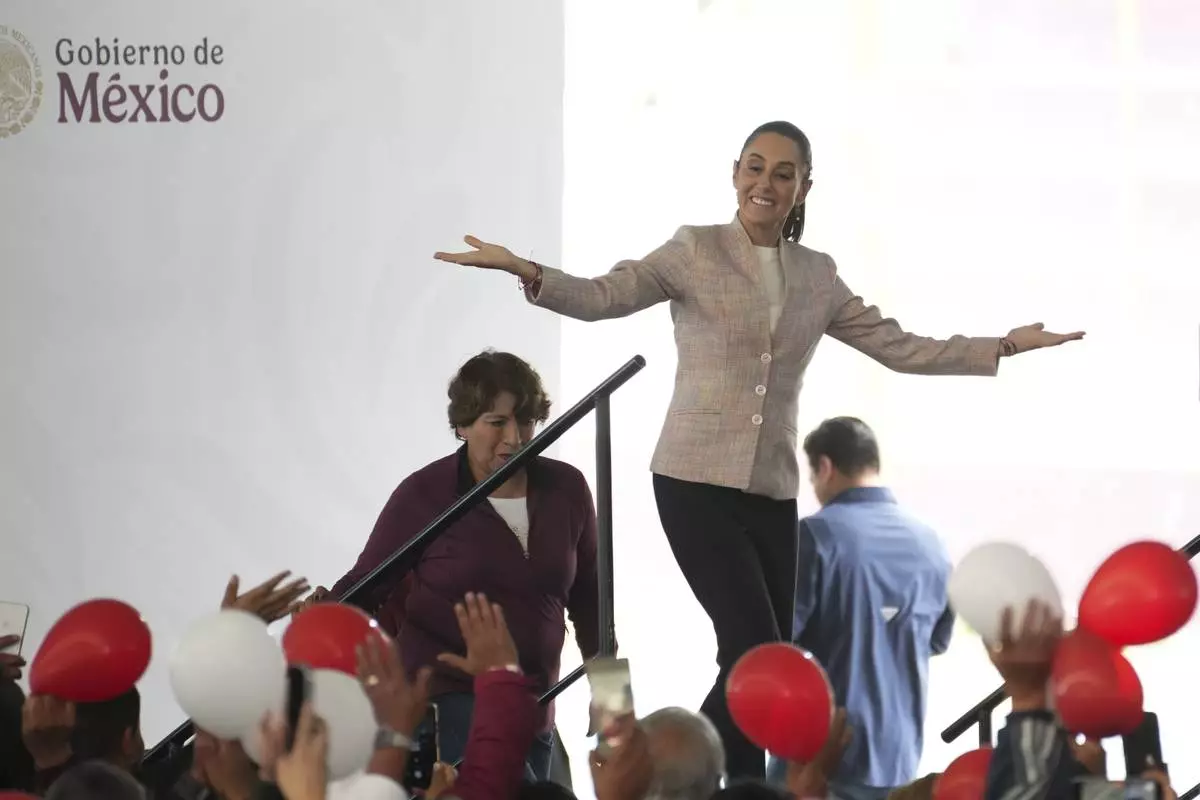
President Claudia Sheinbaum waves as she arrives for a Housing for Wellbeing event, a government-funded home improvement program, in Mexico City, Saturday, Feb. 1, 2025. (AP Photo/Marco Ugarte)
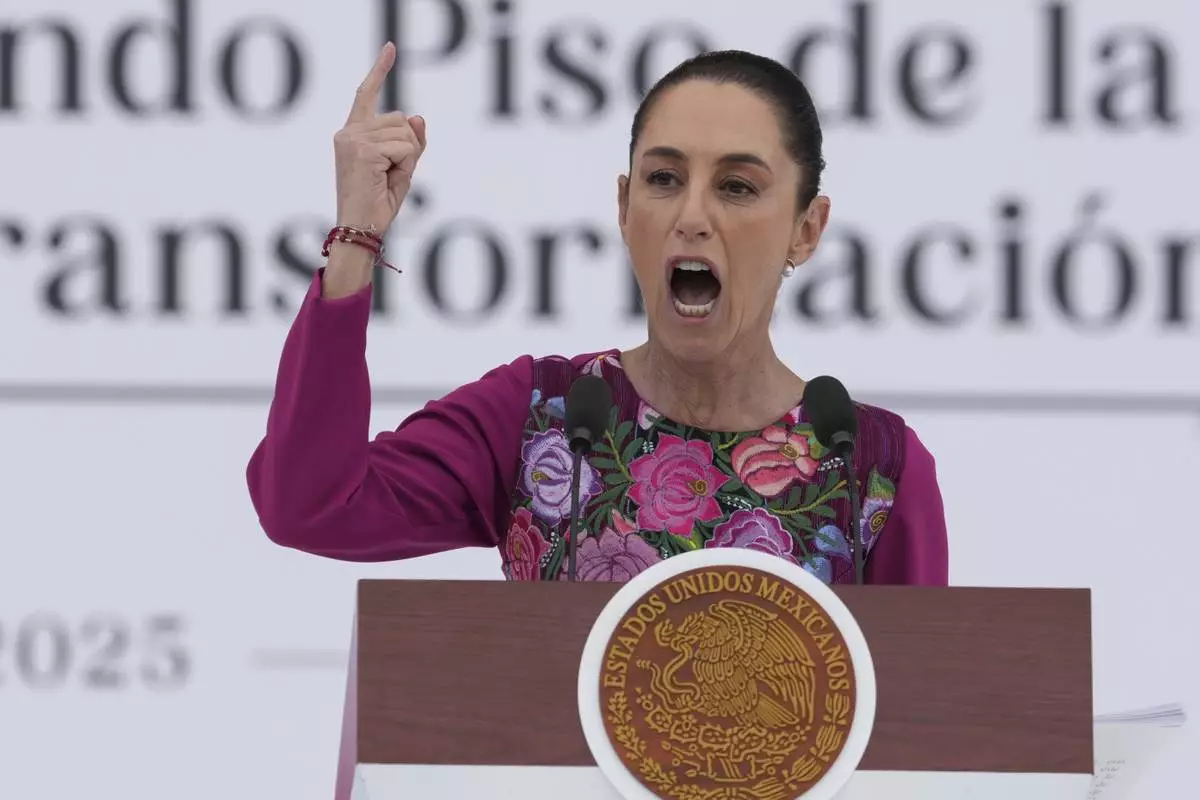
FILE - President Claudia Sheinbaum speaks to the crowd during an event marking her first 100 days in office, at the Zócalo, Mexico City's main square, in Mexico City, Sunday, Jan. 12, 2025. (AP Photo/Fernando Llano, File)

FILE - Shelves display bottles of bourbons for sale at a Pennsylvania fine wine and spirits store, Saturday, Jan. 22, 2022, in Harmony, Pa. (AP Photo/Keith Srakocic, File)
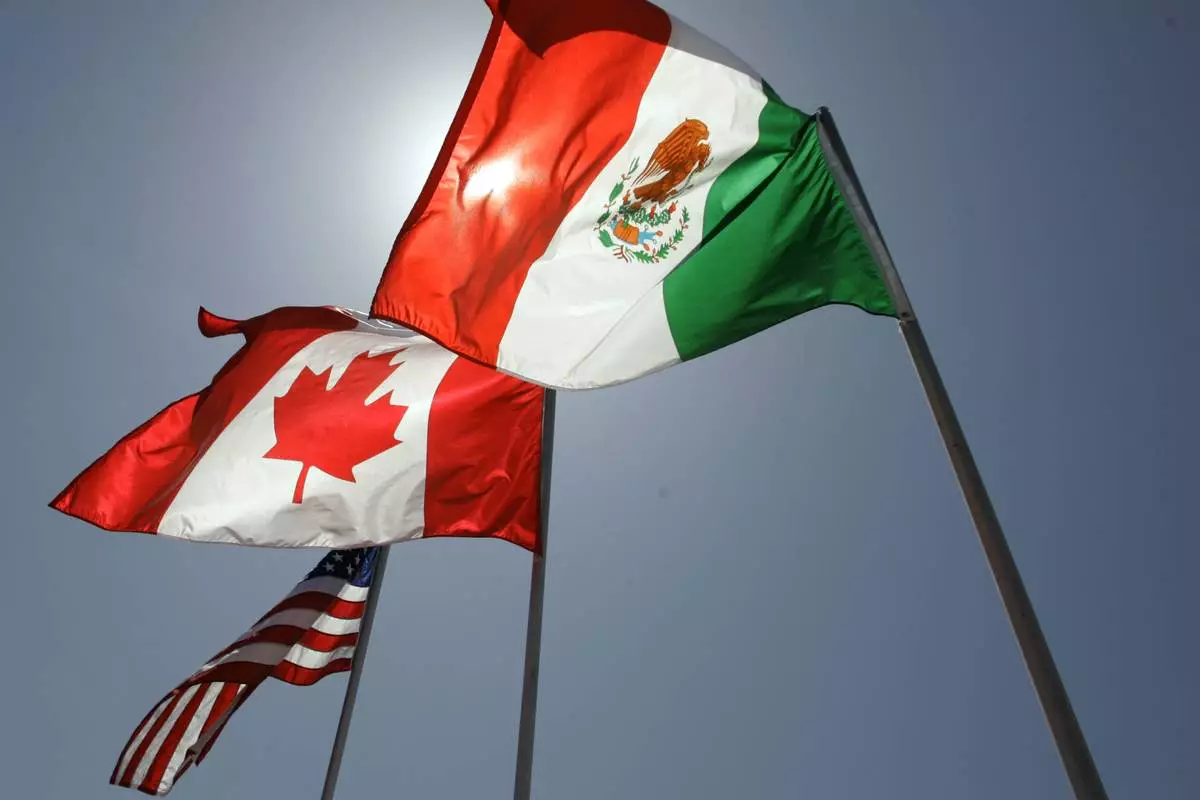
FILE - National flags representing the United States, Canada, and Mexico fly in the breeze in New Orleans where leaders of the North American Free Trade Agreement met on April 21, 2008. (AP Photo/Judi Bottoni, File)
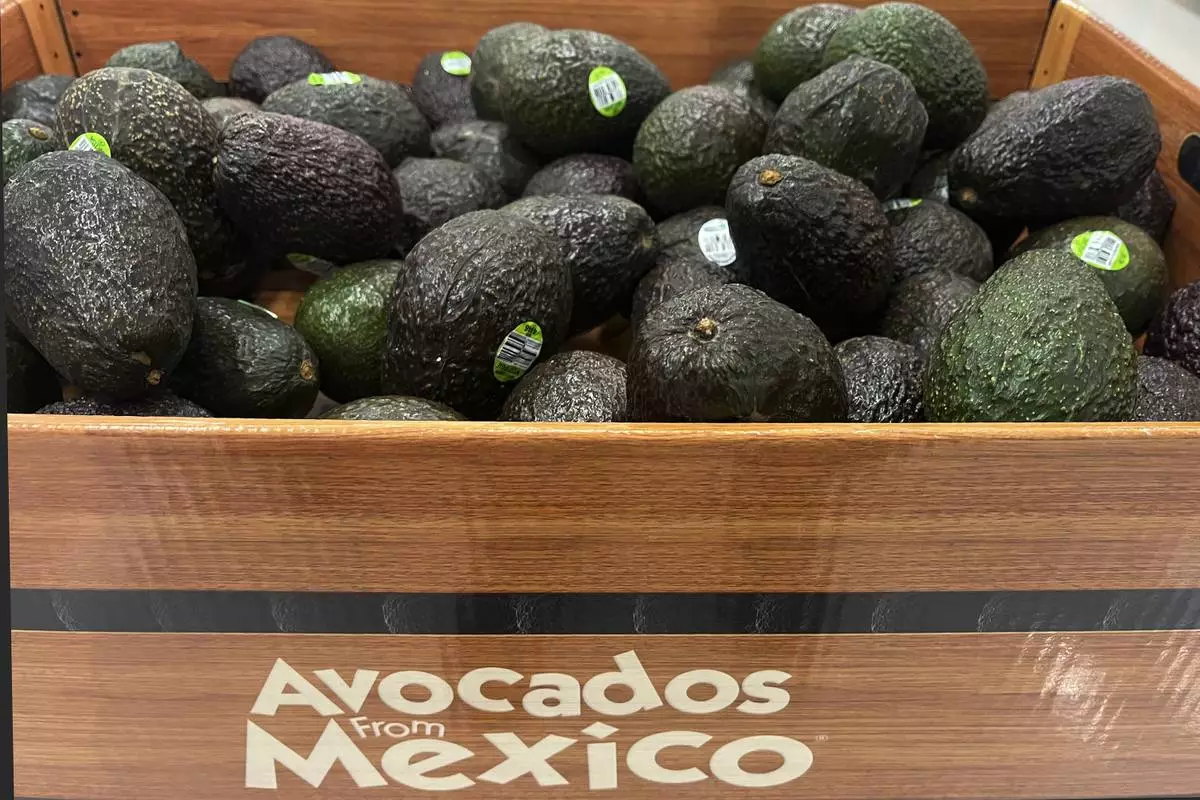
Avocados from Mexico are displayed for sale at a Target store in White Plains, N.Y., on Friday, Jan. 31, 2025. (AP Photo/Donald King)

Avocados from Mexico are displayed for sale at a Target store in White Plains, N.Y., on Friday, Jan. 31, 2025. (AP Photo/Donald King)
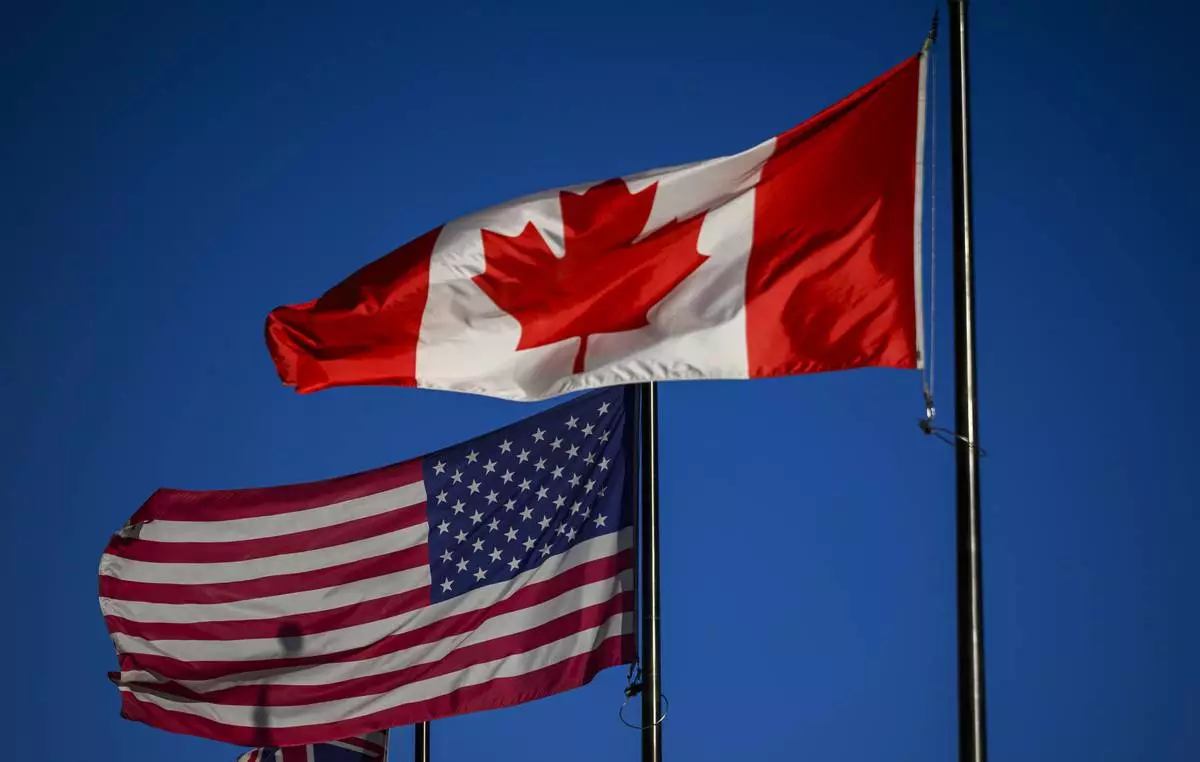
The flags of Canada and the United States fly outside a hotel in downtown Ottawa, on Saturday, Feb. 1, 2025. (Justin Tang/The Canadian Press via AP)
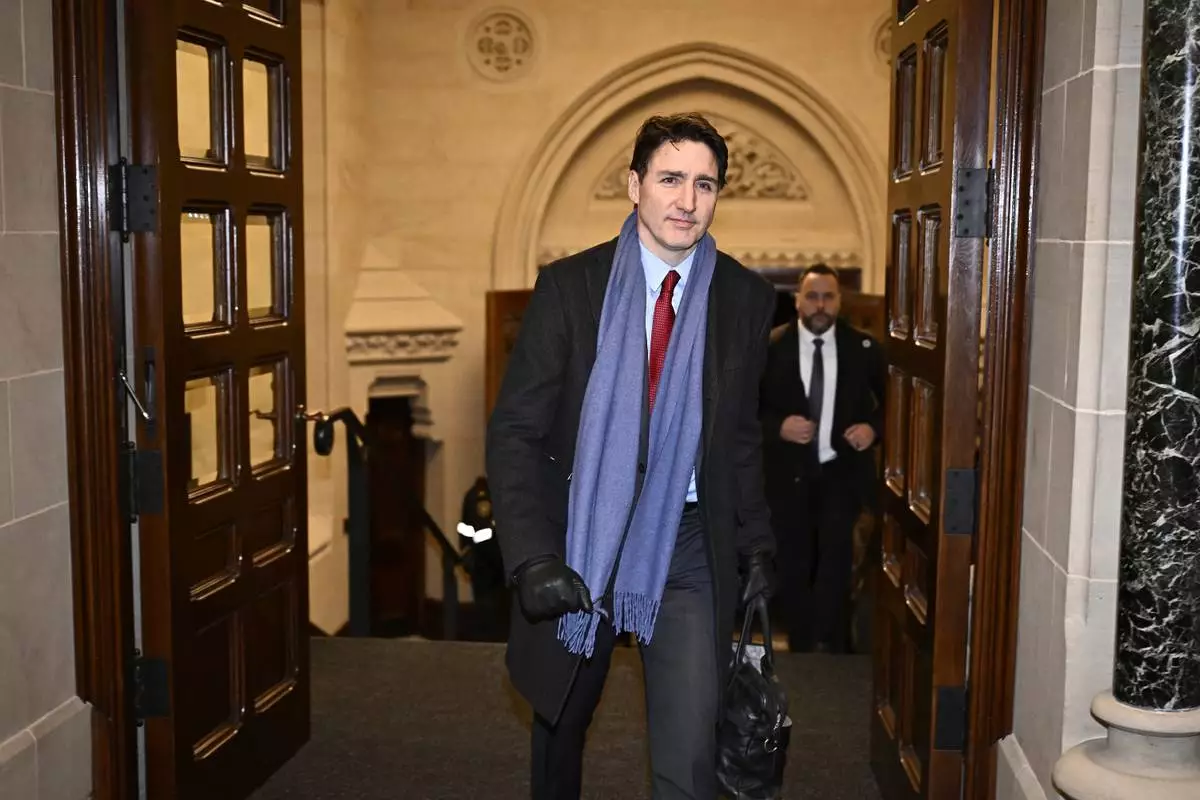
Canada's Prime Minister Justin Trudeau arrives to address media following the imposition of a raft of tariffs by U.S. President Donald Trump against Canada, Mexico and China, in Ottawa, Saturday, Feb. 1, 2025. (Justin Tang/The Canadian Press via AP)
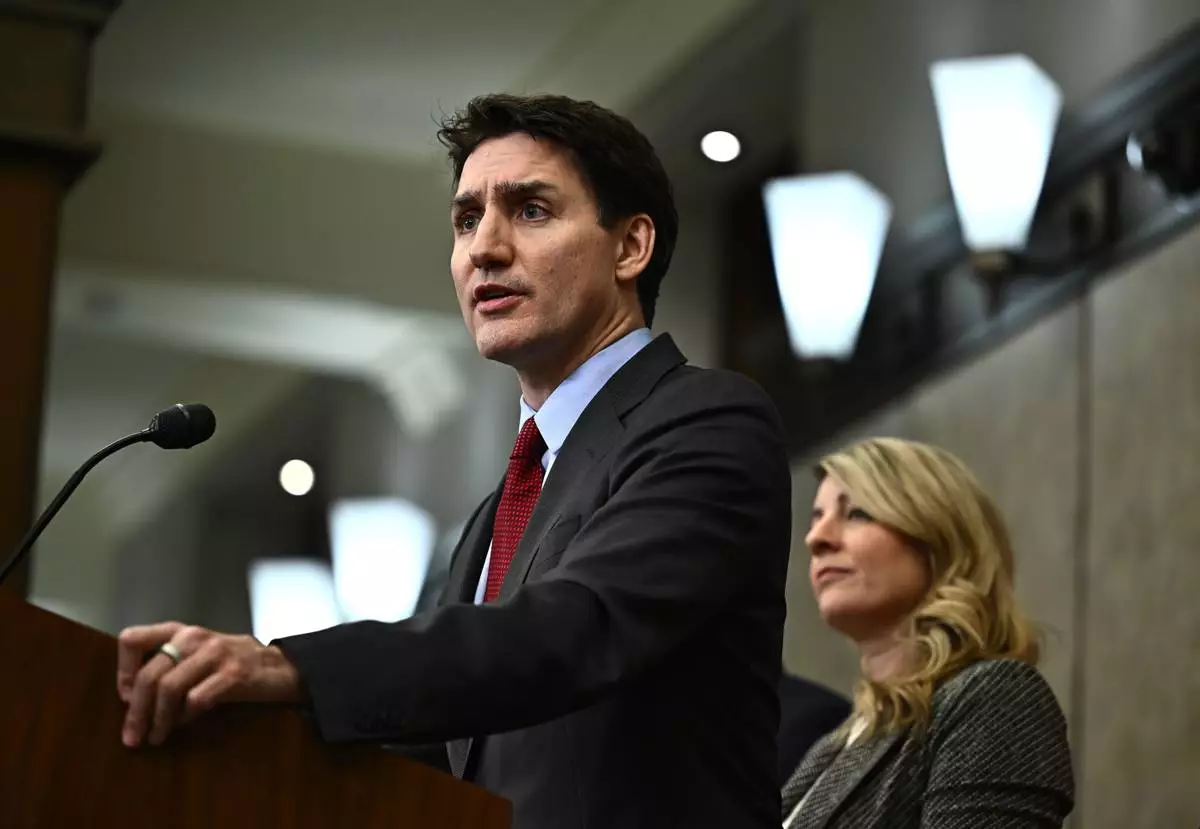
Canadian Prime Minister Justin Trudeau addresses media members after U.S. President Donald Trump signed an order to impose stiff tariffs on imports from Mexico, Canada and China, in Ottawa, Canada, Saturday, Feb. 1, 2025. (Justin Tang/The Canadian Press via AP)

Canadian Prime Minister Justin Trudeau addresses media members after U.S. President Donald Trump signed an order to impose stiff tariffs on imports from Mexico, Canada and China, in Ottawa, Canada, Saturday, Feb. 1, 2025. (Justin Tang/The Canadian Press via AP)



